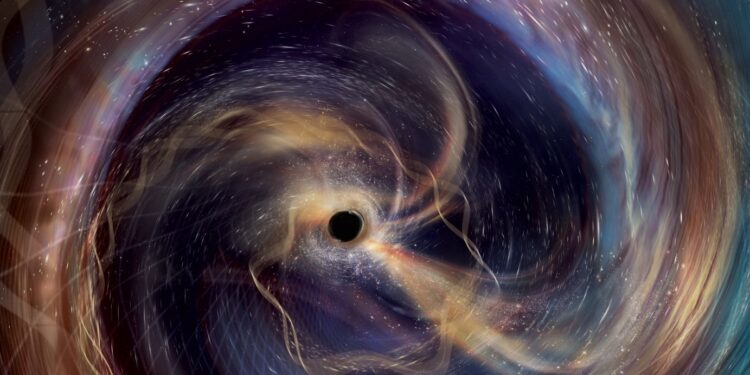Astronomers have observed the biggest black hole merger ever recorded, challenging long-held assumptions about how such massive objects are formed.
The event, first detected on November 23, 2023, was revealed this week at the International Conference on General Relativity and Gravitation in Glasgow, United Kingdom. Researchers used the Laser Interferometer Gravitational-Wave Observatory (LIGO) in Washington and Louisiana, part of the global LIGO-Virgo-KAGRA (LVK) network, to identify the gravitational waves generated by the collision. The signal, lasting just 0.1 seconds, was designated GW231123.
What are black holes?
Black holes are regions of space where matter is compressed into an incredibly small volume, creating gravitational forces so powerful that not even light can escape. Because they emit no light, black holes cannot be seen directly—scientists instead study their effects, such as gravitational waves, to understand them.
Most black holes are thought to form when massive stars collapse after exhausting the fuel that powers their fusion reactions.
What happened in this collision?
The two merging black holes were estimated at 100 and 140 times the mass of the Sun, combining into a single black hole with more than 265 solar masses. This dwarfs the previous record-holder, GW190521, a 140-solar-mass merger detected in 2019 some 17 billion light years from Earth.
Why is it important?
Researchers believe the sheer size of the new black hole suggests it did not come from a single star’s collapse. Instead, it likely formed through successive mergers—a process where smaller black holes collide and fuse over time.
“This increases our confidence that black holes can go through a series of successive mergers to produce much more massive black holes,” said Mark Hannam, professor at Cardiff University and member of the LIGO Scientific Collaboration.
Does this affect Earth?
The discovery poses no threat to Earth or the Milky Way. The event occurred millions to billions of light years away—meaning it actually took place millions of years ago, with the waves only now reaching us.
Scientists measure this distance as about 3 gigaparsecs (roughly 31 trillion kilometers per parsec), numbers so large they defy everyday comprehension.
With nearly 300 black hole collisions detected through gravitational waves so far, this record-breaking merger offers fresh insight into the evolution of the universe’s most enigmatic objects.

































